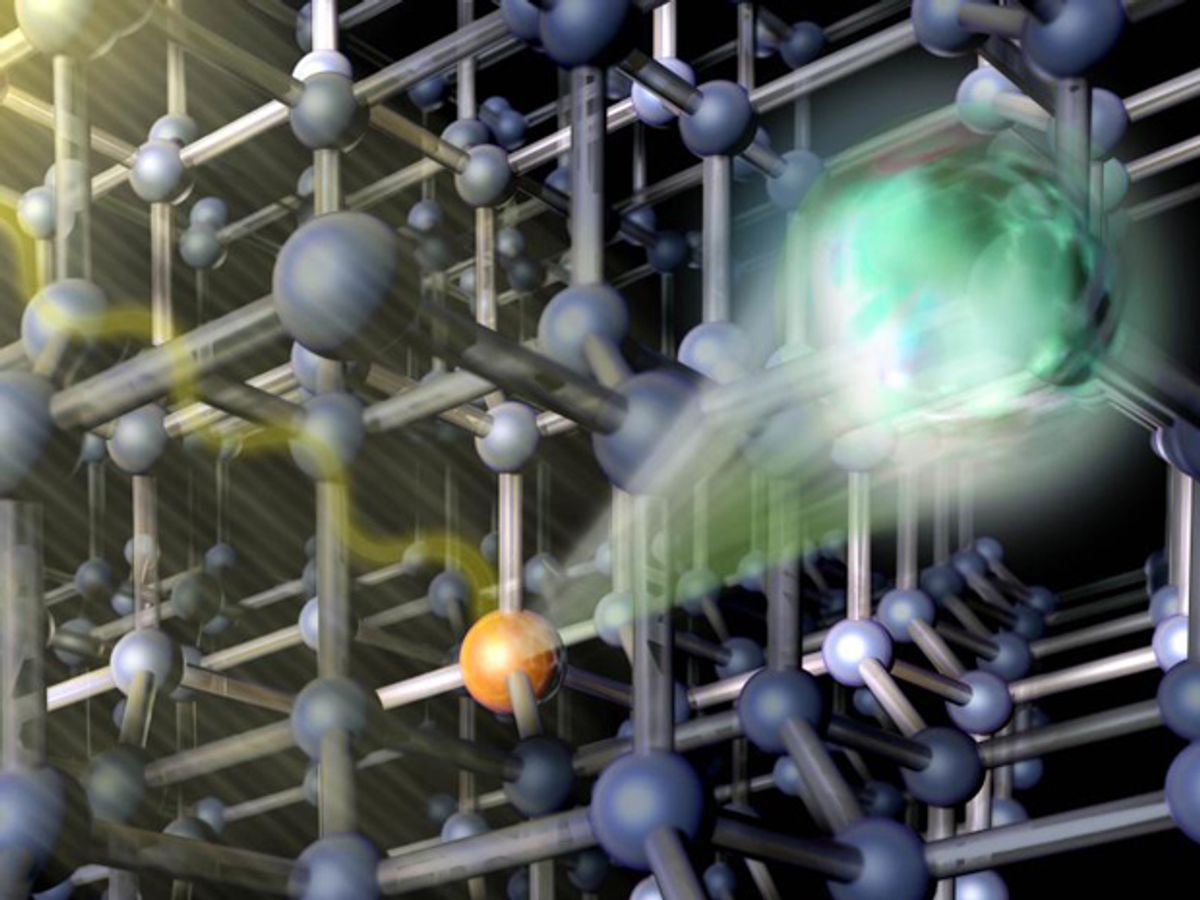Spintronics—in which the spin of electrons is used to encode information rather than charge—is the foundational technology for the read heads in the hard drives of our computers and is the focus of extensive research in creating the logic devices based on the spin of electrons that could lead to quantum computing.
While there has been some recent research in which electric fields are used to manipulate the spin of electrons, the predominant way to read the spin of an electron is to use extremely powerful magnetic fields.
Now researchers at the London Centre for Nanotechnology (LCN) have put aside both magnetic and electrical fields and have demonstrated that it’s possible to read the spin of an electron with a laser.
In research published in the journal Nature Materials, the LCN team was able to adapt the technique known as “spin-dependent tunneling” using a laser (instead of a magnet coupled with extremely low temperatures) to pull an electron away from its atom.
This spin-dependent tunneling technique depends on doping a silicon wafer with phosphorus atoms. The phosphorus creates an extra electron in the wafer, which makes it possible to single out and read its spin using magnets, or now as the LCN team showed, lasers.
The LCN researchers discovered that shining a laser on the silicon wafer with the phosphorus impurities creates something called “bound excitons,” which are basically energized electrons bound to positively charged holes that form when light hits a semiconductor. In this case, the bound excitons remain at the site of the phosphorus impurity and when the electron and hole combine they release enough energy to push the extra electron out of the phosphorus atoms.
While the ejection of the extra electron is not in itself enough to measure the spin of the electron, it does create a small electrical current that lets the researchers determine the electron’s spin.
“Our technique relies on the slightly different energy associated with electrons with different spins,” said Cheuk Lo, lead of the author if the study, in a press relese. “By finely tuning the wavelength of the laser light to provide just the right amount of energy, we can selectively eject only ‘up’ or ‘down’ electrons from the impurities. By detecting whether a current is produced when different wavelengths are shone upon the experiment, we can determine what the spin of the electron was.”
Because this technique makes it possible to read the spin of electrons without magnetic fields, the spin can be measured in environments that would pose a problem for magnetic fields.
Dexter Johnson is a contributing editor at IEEE Spectrum, with a focus on nanotechnology.



